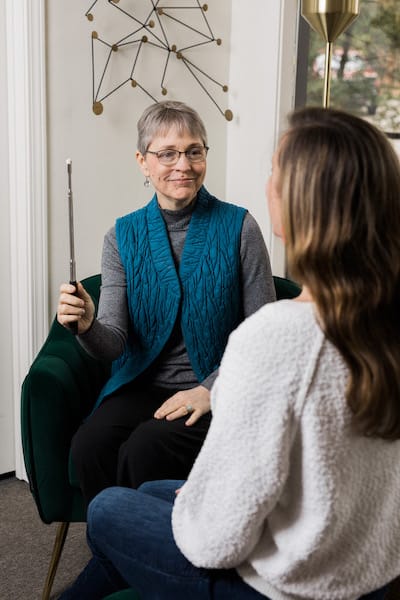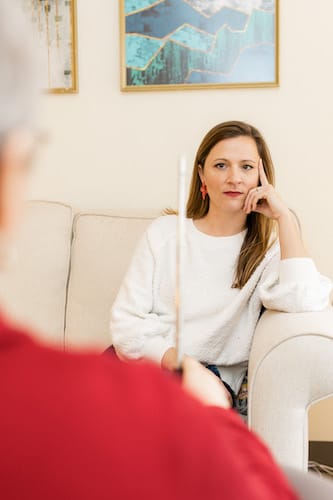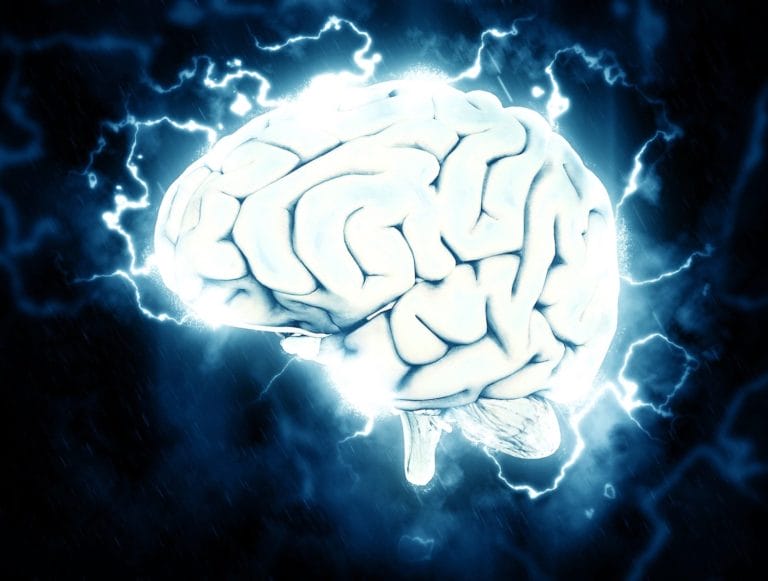Everyone feels some level of anxiety at times. You may feel nervous about an upcoming date, worry about an ailing parent, or doubt your abilities at work.
However, for some, anxiety is a daily struggle with no clear cause. People with anxiety experience intrusive, obsessive thoughts and can find it hard to focus. They may also experience physical manifestations of anxiety-like muscle tension, increased sweating, high blood pressure, insomnia, panic attacks, and digestive problems.
When these feelings and symptoms become overwhelming, you should meet with a therapist.

What is Brainspotting Therapy?
Brainspotting is an innovative brain-based therapy tool developed by psychotherapist Dr. David Grand, who discovered that “where you look affects how you feel” and used that finding to create a method for fast and effective self-healing.
Brainspotting therapy works by locating an eye position that correlates to a deep place in your subcortical brain where a negative emotion, memory, thought, or experience is stored; this eye position is called a brainspot.
In a Brainspotting therapy session, the therapist will help you focus your eyes on different points in your field of vision. When a brainspot is found, you may experience subconscious physical reflexes, such as changes in facial expression, eye twitches, pupil dilation, or facial tics. You will then hold that eye position and focus on your emotions and experiences.
Once the brainspot is activated, it will release the negative emotion, memory, thought, or experience, allowing you to rapidly process, resolve, overcome, and heal.

Brainspotting Therapy for Anxiety
Brainspotting therapy is an especially effective tool for treating anxiety because anxiety is a physiological response to feelings that your brain is trying to manage, and Brainspotting is a physiological therapy that heals the trauma in your brain.
In fact, it has been proven that Brainspotting therapy significantly reduces anxiety during therapy and then continues to reduce anxiety after therapy has ended. This is possible because Brainspotting therapy creates pathways to heal anxiety rather than masking its symptoms.
If traditional talk therapy has been unsuccessful for you, or if it seems uncomfortable or overwhelming, Brainspotting therapy is a great alternative since it uses eye and body movements, rather than words, to access the source of your anxiety in your brain. While Brainspotting therapy can be used independently, it can also enhance other types of therapies (e.g., talk therapy and EMDR). We have found that using Brainspotting therapy alongside regular talk therapy sessions results in the most powerful relief and change.
At The Finding Place, all of our therapists are trained in Brainspotting. We invite you to contact us for Brainspotting therapy, even if you have an existing therapist for talk therapy.
If you are experiencing anxiety during the coronavirus/COVID-19 pandemic, if you suffer from social anxiety, or if you live far from our clinic, Brainspotting therapy can also be done via teletherapy.
In addition to healing anxiety, Brainspotting therapy can be used to find brainspots for positive emotions like hopefulness and relaxation, which you can revisit when needed. With Brainspotting therapy, you can trade your anxiety for joy.






